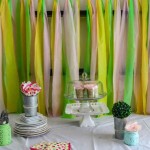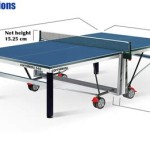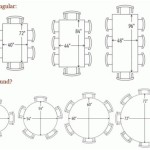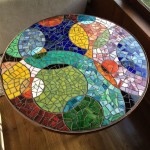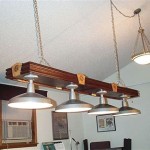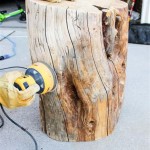Lacquer Table Tennis Blades: A Blend of Performance and Aesthetics
Lacquer table tennis blades, also known as "lacquered blades," are a unique and highly sought-after category within the realm of table tennis equipment. They are renowned for their distinctive visual appeal, often showcasing intricate designs and vibrant colors, but they also possess technical characteristics that make them a strong contender for both casual and competitive players. This article explores the world of lacquer table tennis blades, examining their history, design, and performance attributes.
History of Lacquer Table Tennis Blades
The art of lacquerwork has a rich history, dating back centuries in various cultures, especially in Asia. In Japan, where lacquerware holds a prominent place in traditional crafts, the practice of applying lacquer to table tennis blades emerged in the latter half of the 20th century. While the exact origins are difficult to pinpoint, it is generally accepted that the trend gained traction during the 1970s and 1980s. Initially, lacquer blades were often considered more of a novelty item, prized for their aesthetic beauty rather than their performance. However, as the technology behind lacquer application improved, and as players began to appreciate the advantages it offered, lacquer blades transitioned from a niche product to a respected and highly sought-after category within the sport.
Design and Construction of Lacquer Table Tennis Blades
Lacquer table tennis blades are constructed using a similar process as traditional blades, but with the addition of a layer of lacquer applied to the surface. The blade's core is typically made of a combination of wood layers, often featuring different types of wood to create a desired feel and performance profile. These layers are glued together and pressed into shape, creating a solid and durable foundation for the blade. Once the core is assembled, it is then coated with several layers of lacquer, carefully applied and meticulously dried to achieve a smooth and glossy finish. The lacquer itself can be pigmented with various colors and can be adorned with intricate designs using techniques like hand-painting or engraving.
The choice of lacquer and the application process play a crucial role in the final look and feel of the blade. Lacquer can range in thickness, influencing the overall weight and feel of the blade. Thicker layers of lacquer tend to add weight, which can potentially impact the blade's overall speed and maneuverability. However, it also adds to the blade's durability and resistance to scratches and wear. The choice of the lacquer's color, design, and finish ultimately depends on the aesthetic preferences of the player and the brand's artistic vision.
Performance Advantages of Lacquer Table Tennis Blades
Beyond their captivating appearance, lacquer table tennis blades offer unique performance advantages. The application of lacquer can subtly alter the blade's characteristics, affecting factors like weight distribution, ball control, and overall feel. Depending on the type of lacquer used, players can expect a variety of benefits:
- Enhanced Durability: The thin layer of lacquer acts as a protective shield, safeguarding the blade's surface from scratches, scuffs, and wear and tear. This increased durability ensures that the blade retains its performance and aesthetic appeal for an extended period.
- Improved Ball Control: The smooth, glossy surface of the lacquer coating can provide a slightly more consistent bounce for the ball, which can translate into improved ball control and accuracy.
- Enhanced Durability: The thin layer of lacquer acts as a protective shield, safeguarding the blade's surface from scratches, scuffs, and wear and tear. This increased durability ensures that the blade retains its performance and aesthetic appeal for an extended period.
- Modified Weight Distribution: The strategically applied lacquer can alter the blade’s overall weight distribution, affecting its balance and swing weight. This can be beneficial for players seeking a blade that feels more comfortable and intuitive in their hands.
The performance benefits of lacquer blades are largely subjective and can vary depending on the player's preferences and playing style. Some players may find that the lacquer coating adds a unique feel to their game, enhancing their ability to control the ball with greater precision. Others may prefer a more traditional, unlacquered blade for its raw feel and responsiveness. Ultimately, the decision to choose a lacquer blade comes down to personal preference and the specific performance characteristics that appeal to the individual player.
Choosing a Lacquer Table Tennis Blade
When selecting a lacquer table tennis blade, there are several factors to consider:
- Playing Style: The style of play you engage in is a critical factor. Offensive players may seek a blade with a faster head speed and a more aggressive feel, while defensive players might prefer a blade with greater control and stability. The lacquer coating can influence these attributes, so choosing a blade that complements your playing style is crucial.
- Blade Weight: The weight of the blade can impact its maneuverability and swing speed. Lacquer-coated blades can be slightly heavier due to the added layer, so it's crucial to find a blade with a weight that feels comfortable and balanced in your hands.
- Blade Size: The size of the blade can affect how it feels in your hand and impacts your ability to generate power. A larger blade might offer more surface area for hitting, but it can also feel unwieldy. A smaller blade might feel more nimble, but it may require greater precision to control the ball.
- Aesthetics: The visual appeal of the blade plays a significant role for many players. Lacquer blades offer a wide range of colors, designs, and finishes, making them attractive and distinctive. Choose a blade that reflects your personal style and preferences.

Should I Seal My Ping Pong Racket Pingsunday

Blade Sealing Ooak Table Tennis Bats And Equipment

Blade Sealing Ooak Table Tennis Bats And Equipment

Should I Seal My Ping Pong Racket Pingsunday

Blade Sealing Ooak Table Tennis Bats And Equipment

How To Professionally Blade Seal Varnish A Table Tennis
Table Tennis 11 Racket Assembly Lacquering Tabletennisdaily

Table Tennis Ping Pong Blade Sealing Made Simple David Hulme S Talk

Revolution No 3 Water Based Lacquer Rodney S Table Tennis

R Balsa Knight

